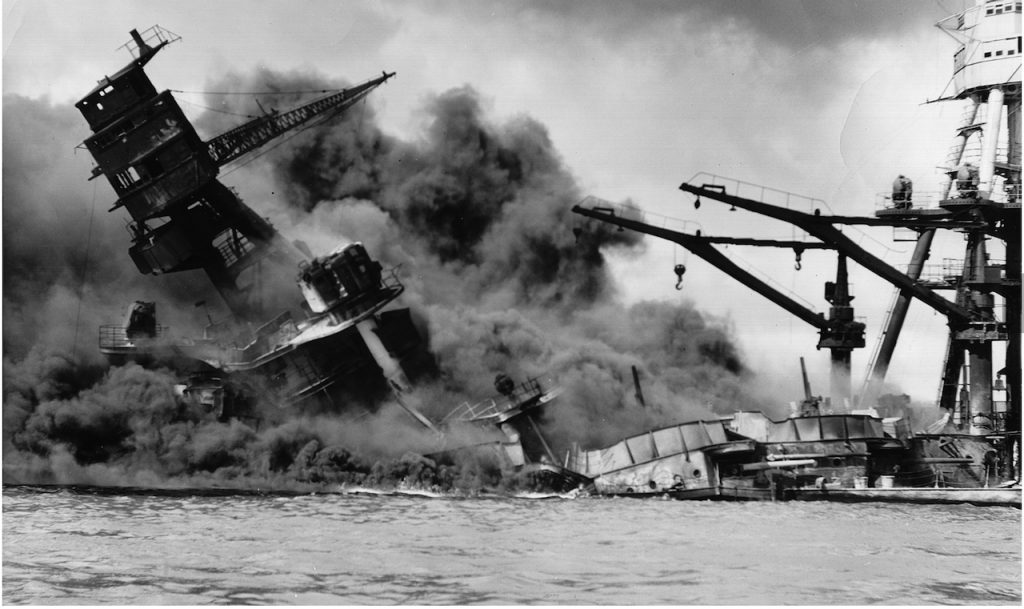The First Major Japanese
Attack of WW2
JAPANESE LANDED MALAYSIA AND THAILAND 8 DECEMBER 1941
At 1.45 am, 8 December 1941 – 40 minutes earlier than raids on Pearl Harbour, Japanese forces landed at Kota Bharu on the Malay coast. Japanese troops soon after landed at Patani and Singora on the south-eastern coast of Thailand.
The Kota Bharu landings developed into a drive down the eastern Malay peninsula, while Japanese troops landed in Thailand advanced down the western side. Badly organised defences by Commonwealth Forces, including Australia’s 8th Division in northern Malaya proved no match for the Japanese advancing down the Malay Peninsula. They also failed in their efforts to concentrate in the southern Malay region of Johore – Commonwealth troops were forced to abandon Malaya to concentrate on Singapore.
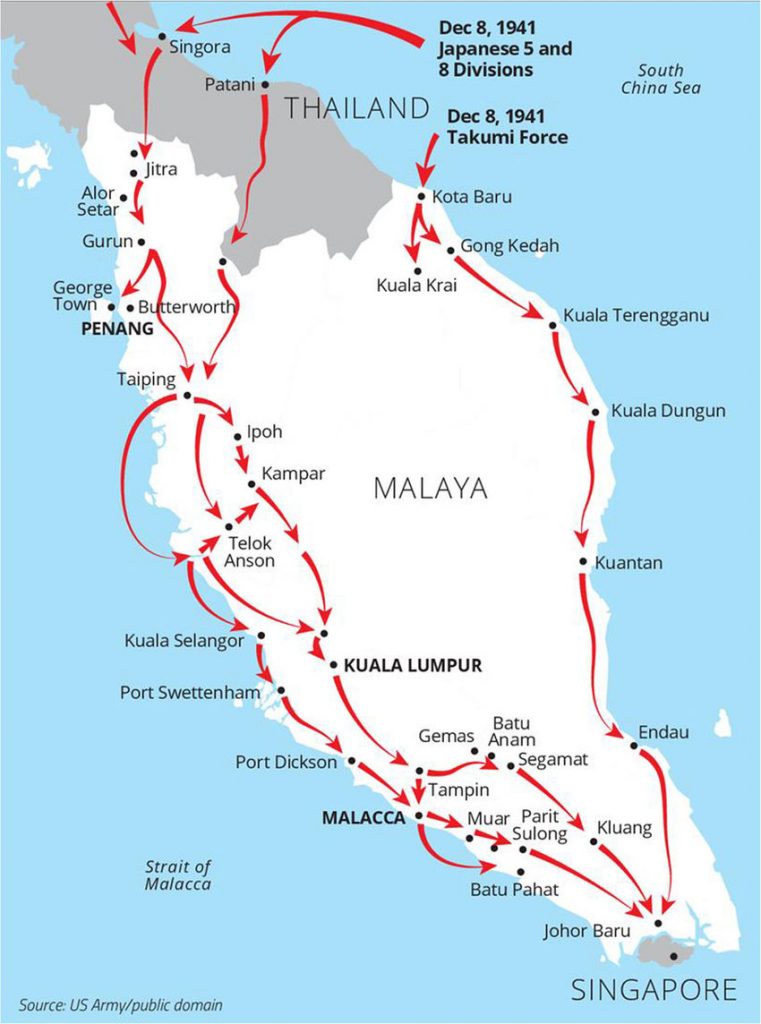
The 2/4th MG Battalion arrived Singapore about 24 Jan 1941. Nearly 100 of their well-trained machine gunners were left behind in Fremantle. The Battalion now included more than 100 reinforcements, most of whom were barely trained. In fact nearly all Australian troops who sailed on the ‘Aquitania’ were minimally trained reinforcements for the 8th Division’s other Battalions.
Japan invaded Singapore’s north-west coast the night of 8 February 1942 – by the night of 15 February, Singapore surrendered to Japan.
_______________
7 DECEMBER 1941 – JAPAN ATTACKS PEARL HARBOUR
Just before 8.00 am Sunday 7 Dec 1941 the skies over Pearl Harbour filled with Japanese planes. Bombs and bullets suddenly rained over the harbour. Ten minutes into the attack an 1800-pound bomb smashed into the deck of battleship USS ‘Arizona’ landing in the forward ammunition magazine – an almighty explosion sank ‘Arizona’ with more than 1,000 men trapped inside.
Over the course of seven hours there were coordinated Japanese attacks on the US – held Philippines, Guam, and Wake Island and British Empire in Malaya, Singapore, and Hong Kong
At Pearl Harbour 2,403 US personnel, including 68 civilians were killed. There were about 1,800 injured. 19 US naval ships, including 8 battleships were damaged or destroyed. 92 naval aircraft were destroyed, 77 army aircraft destroyed and a combined 161 damaged.
The Japanese strike force consisted of 353 aircraft launched from four heavy carriers. These included 40 torpedo planes, 103 level bombers, 131 dive-bombers, and 79 fighters. The attack also consisted of two heavy cruisers, 35 submarines, two light cruisers, nine oilers, two battleships, and 11 destroyers.
One hour and 15 minutes later Captain Mitsuo Fuchida sent the coded message ‘Tora, Tora, Tora‘ to the Japanese fleet after flying over Oahu indicating the Americans had been caught by surprise. The Japanese planned to give the U.S. a declaration of war before the attack began so they would not violate the first article of the Hague Convention of 1907, but the message was delayed and not relayed to U.S. officials in Washington until the attack was already in progress.
Please read this most interesting story about Captain Mitsuo Fuchida
A hurried dispatch from the ranking US naval officer in Pearl Harbour, Admiral Husband Edward Kimmel, Commander in Chief of US Pacific Fleet, to all major navy commands and fleet units provided the first official word of the attack at the ill-prepared Pearl Harbour base. It simply said:
‘AIR RAID ON PEARL HARBOR X THIS IS NOT DRILL.’
The three aircraft carriers from US Pacific Fleet were out to sea on manouvres at this time and remained safe – the Japanese unable to locate them.
Today the battleship USS ‘Arizona’ remains sunken in Pearl Harbour with its crew onboard. Half of the dead at Pearl Harbour were on the ‘Arizona’.
Japan lost 29 aircraft and 5 midget submarines at Pearl Harbour. One Japanese soldier was taken prisoner and 129 Japanese soldiers were killed. Of all the Japanese ships that participated in the attack on Pearl Harbour only one, the ‘Ushio’ survived until the end of the war. ‘Ushio’ surrendered at Yokosuka Naval Base.
When Admiral Yamamoto learned that his forces had not destroyed the U.S. aircraft carriers or completely destroyed the US fleet, he feared the US with its enormous industrial potential, would soon recover and fight back. He was correct – quicker than Yamamoto could have imagined and 6 months later, the US carrier fleet dealt a decisive blow to Yamamoto’s navy in June 1942 at the Battle of Midway, sinking four Japanese aircraft carriers. After this U.S. victory came the start of the US island-hopping campaign and the eventual defeat of the Japanese Empire in August 1945. It was a costly war lasting over a long four and half years.

Yamamoto’s 1925–1928 tenure as attaché reinforced his conviction that because of US military capability and strength, an American war should be avoided at all costs.
Left to right: Capt. Yamamoto Isoroku, Japanese naval attaché in Washington, D.C., U.S. Secretary of the Navy Curtis D. Wilbur, another Japanese naval officer, and Adm. Edward W. Eberle, chief of U.S. naval operations, Feb. 17, 1926.
Library of Congress, Washington, D.C. (digital. id. npcc 27504)
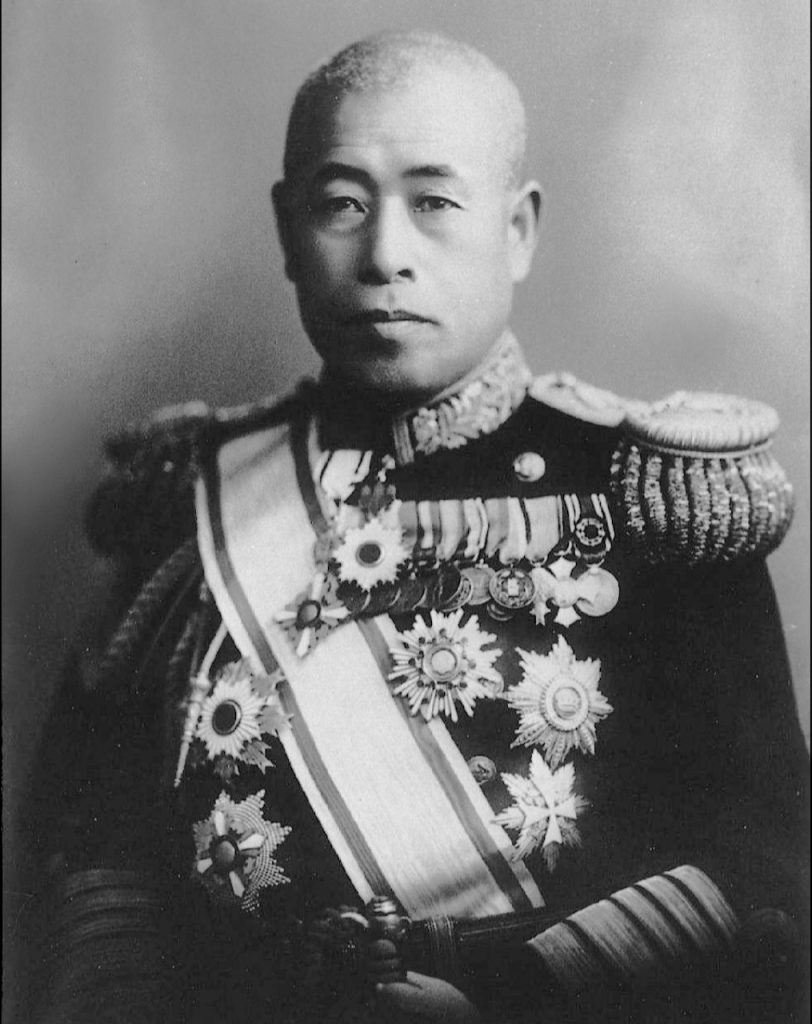
Portrait of Marshal Admiral Isoroku Yamamoto 1943
Below: Yamamoto married in 1918
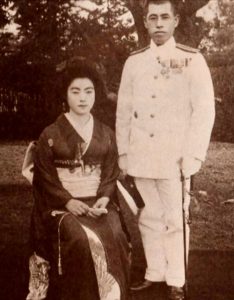
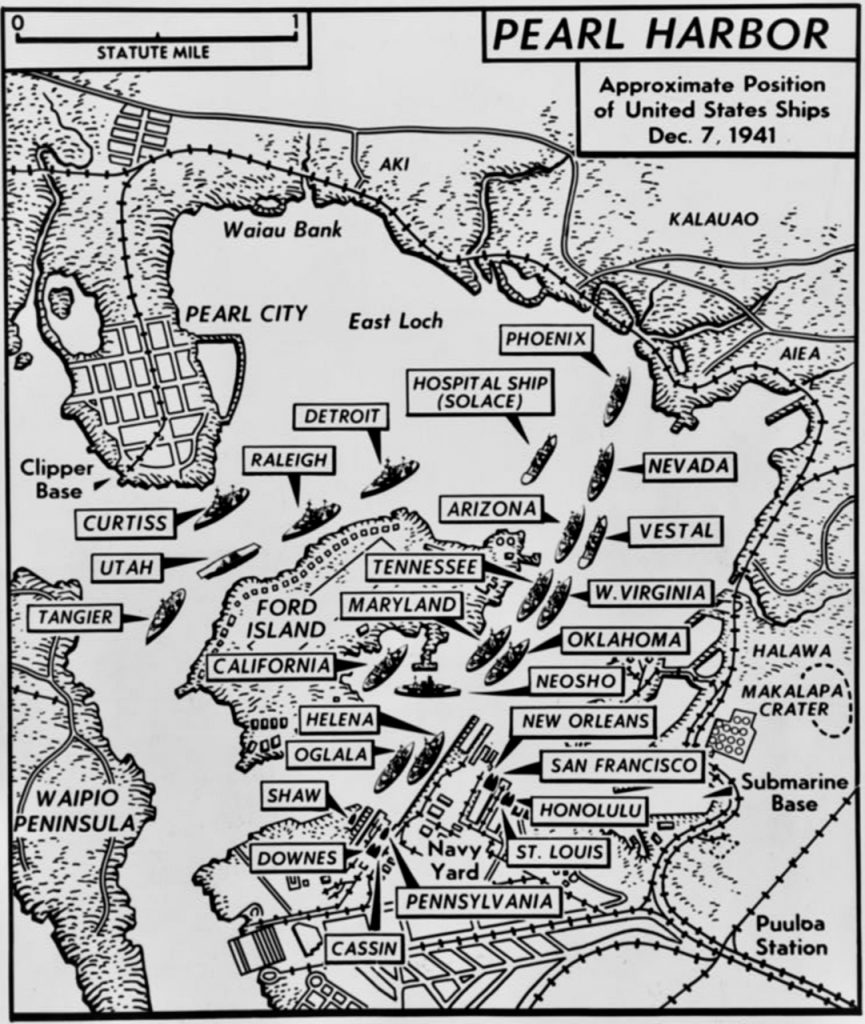
Below: USS ‘Arizona’ in flames
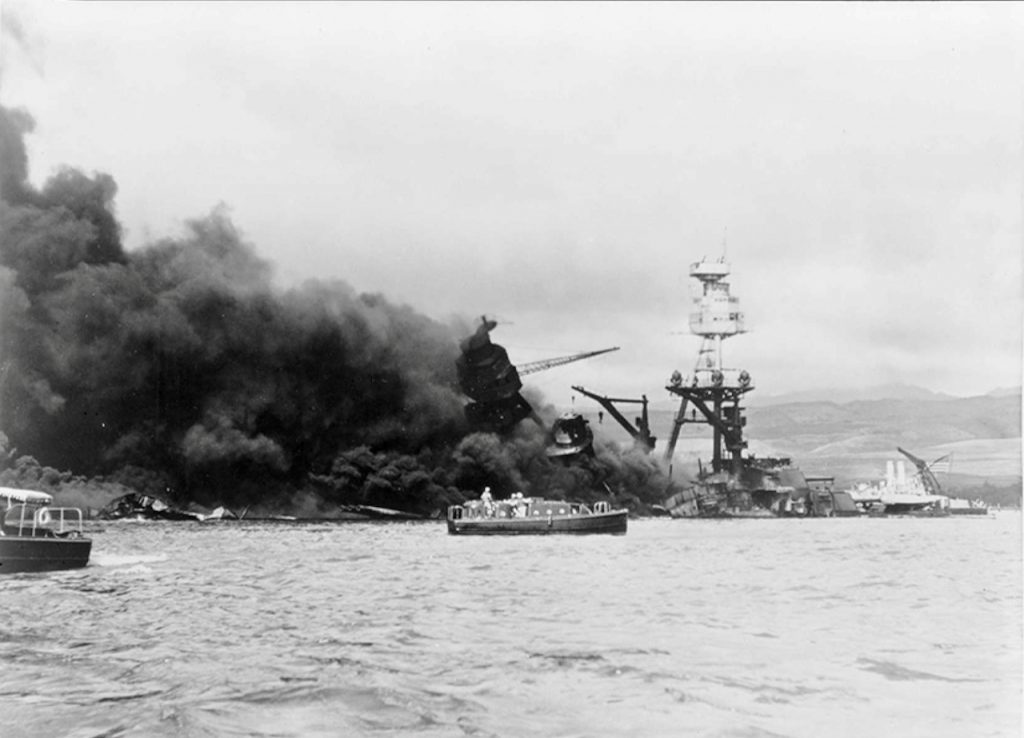
Below: Japanese naval Map of Pearl Harbour, all information provided by Japanese spies ‘on the ground’.
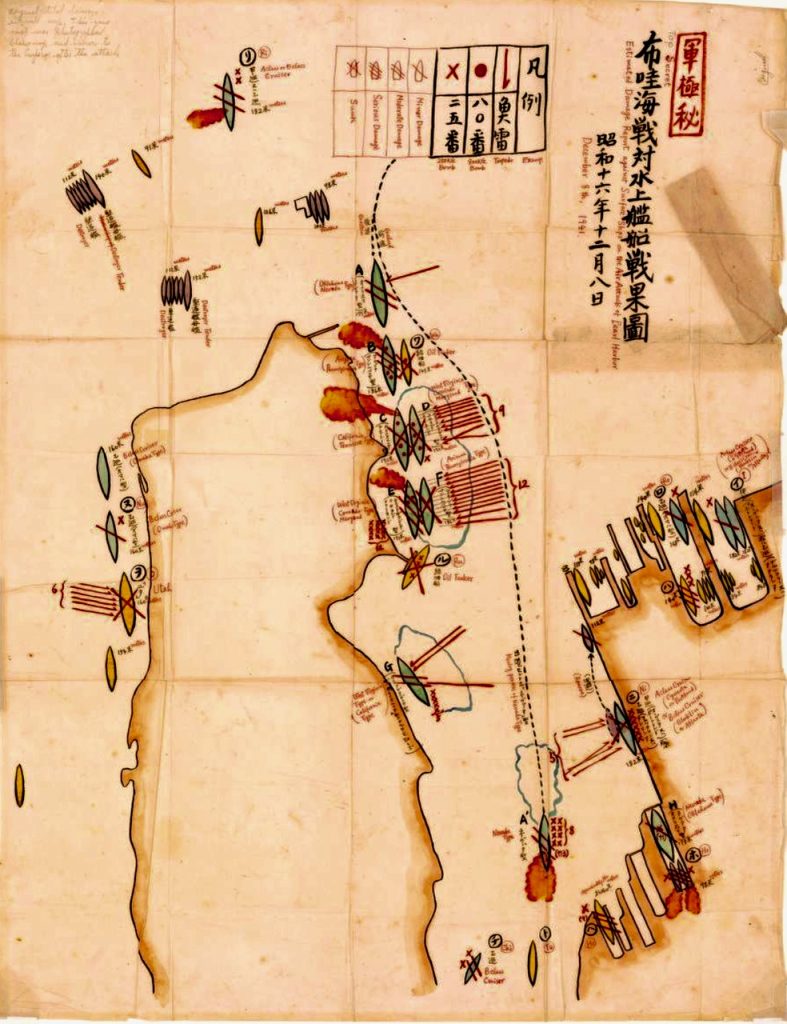
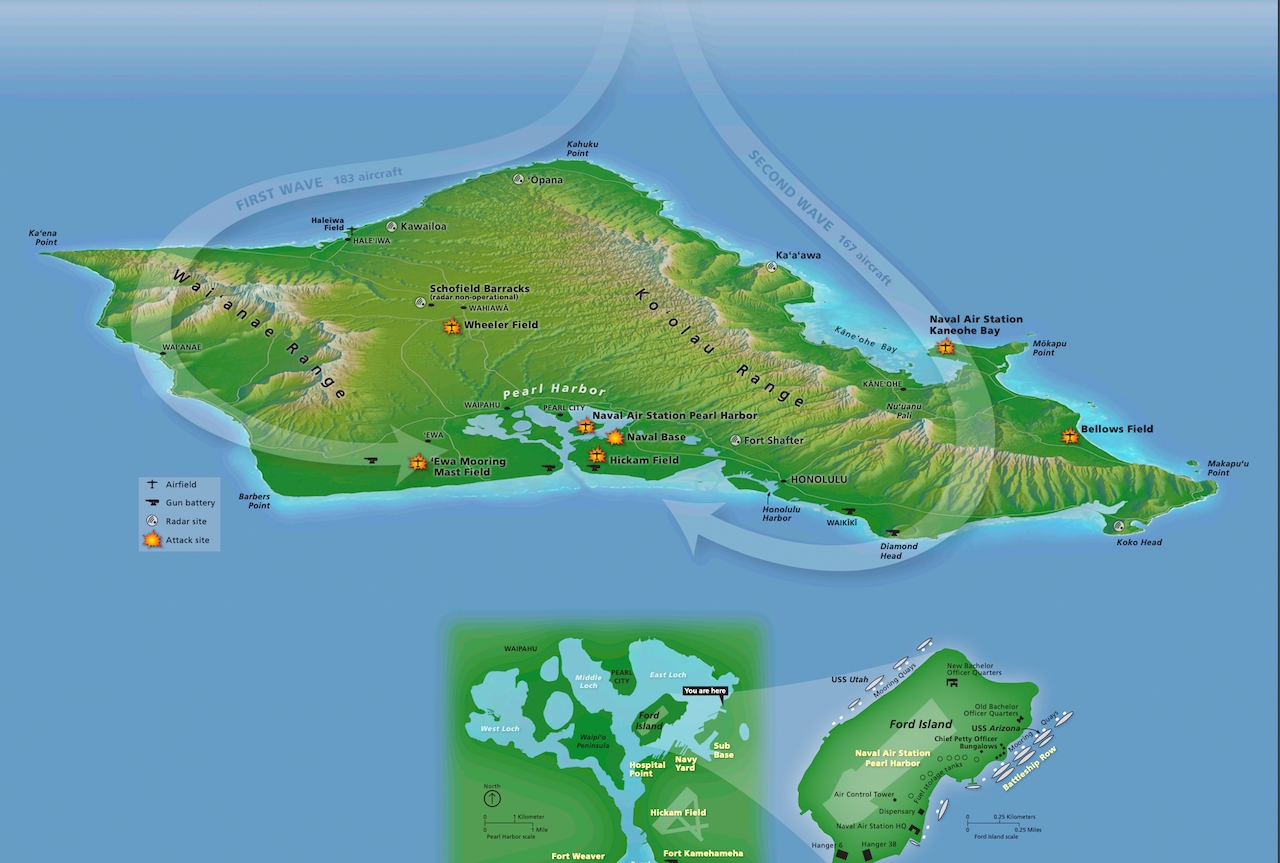
These are Pearl Harbour Memorial Maps
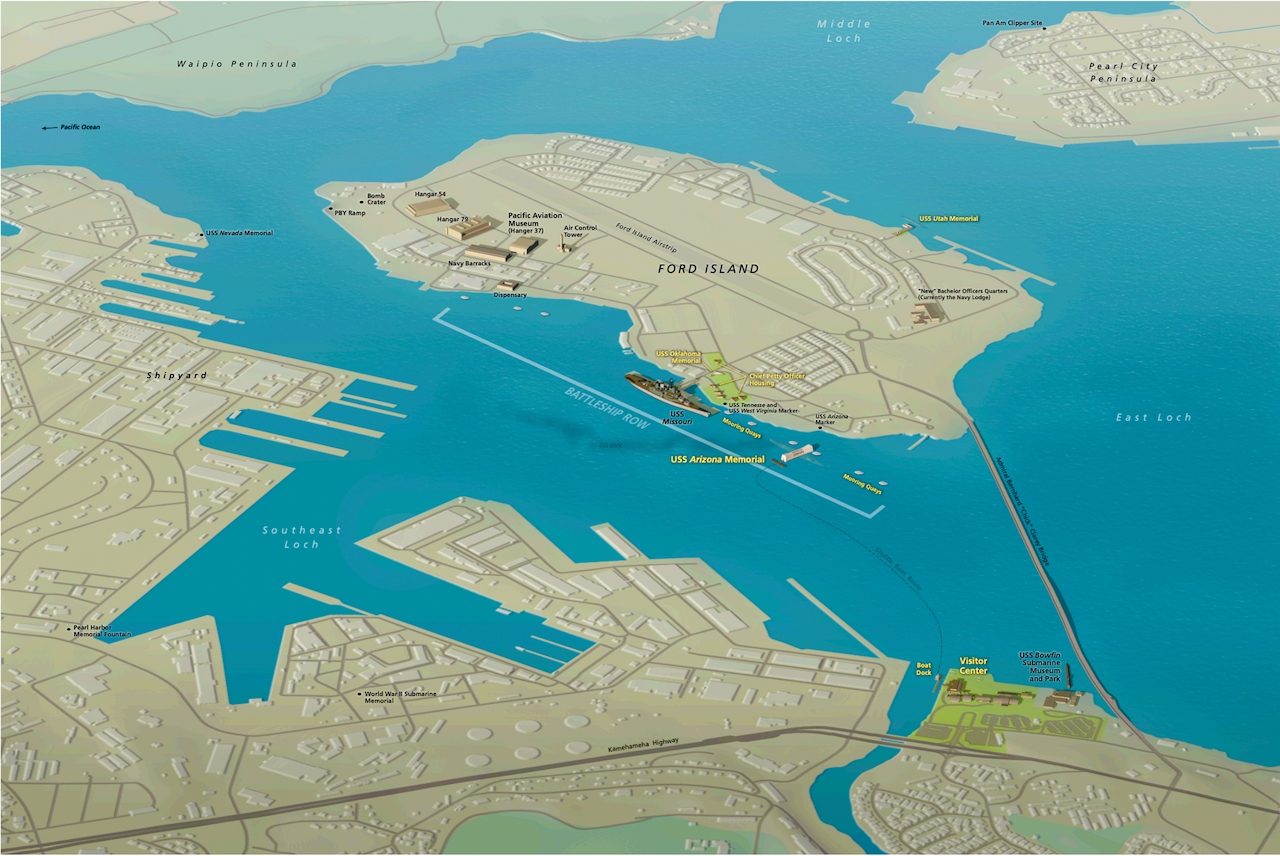
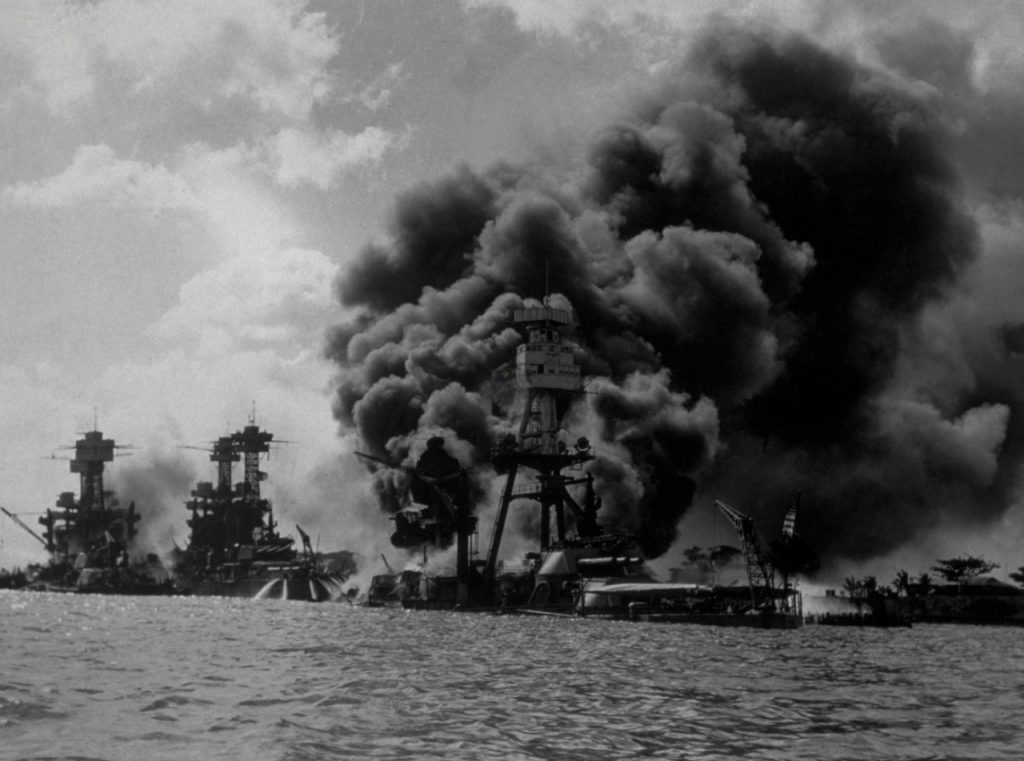
Below: ‘Arizona’
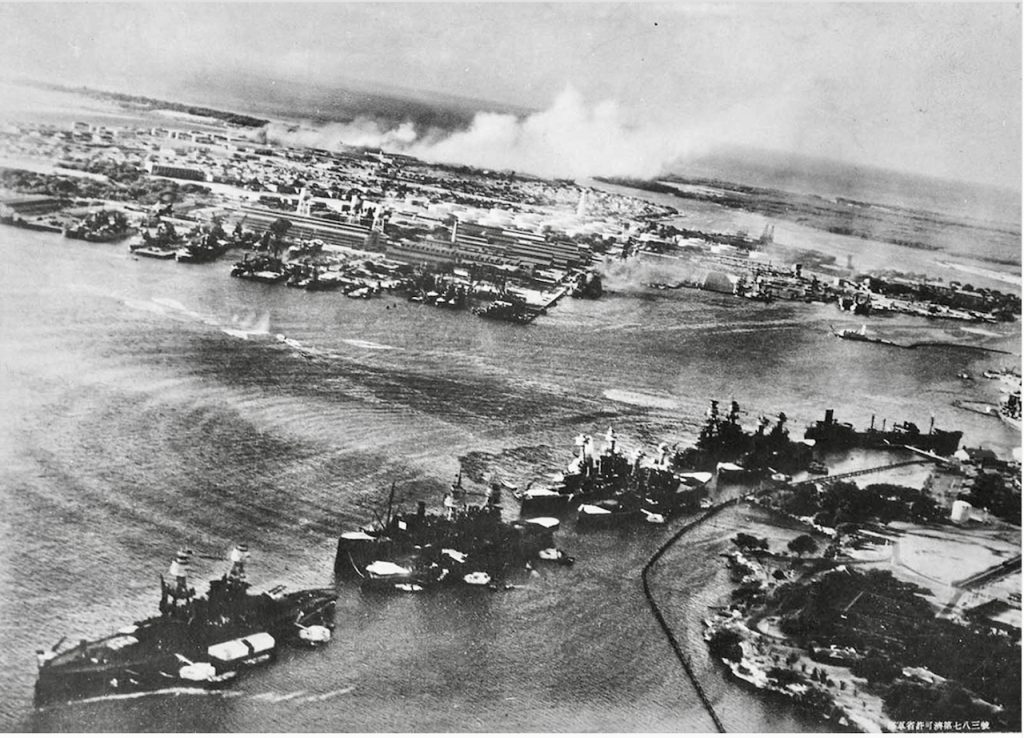
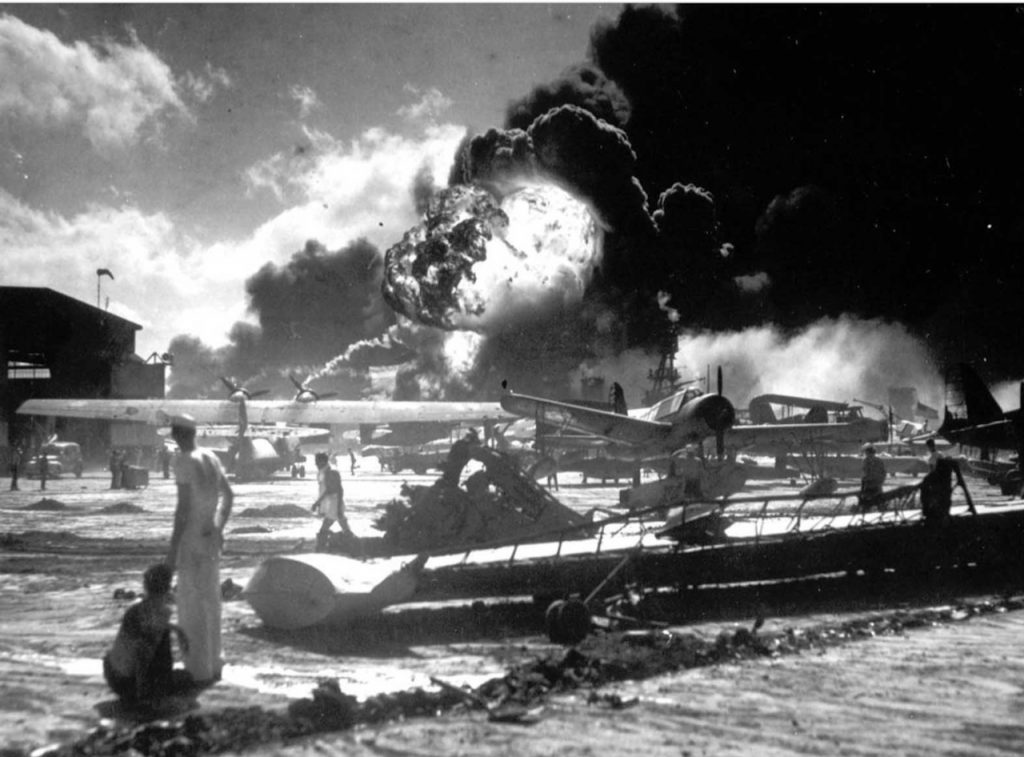
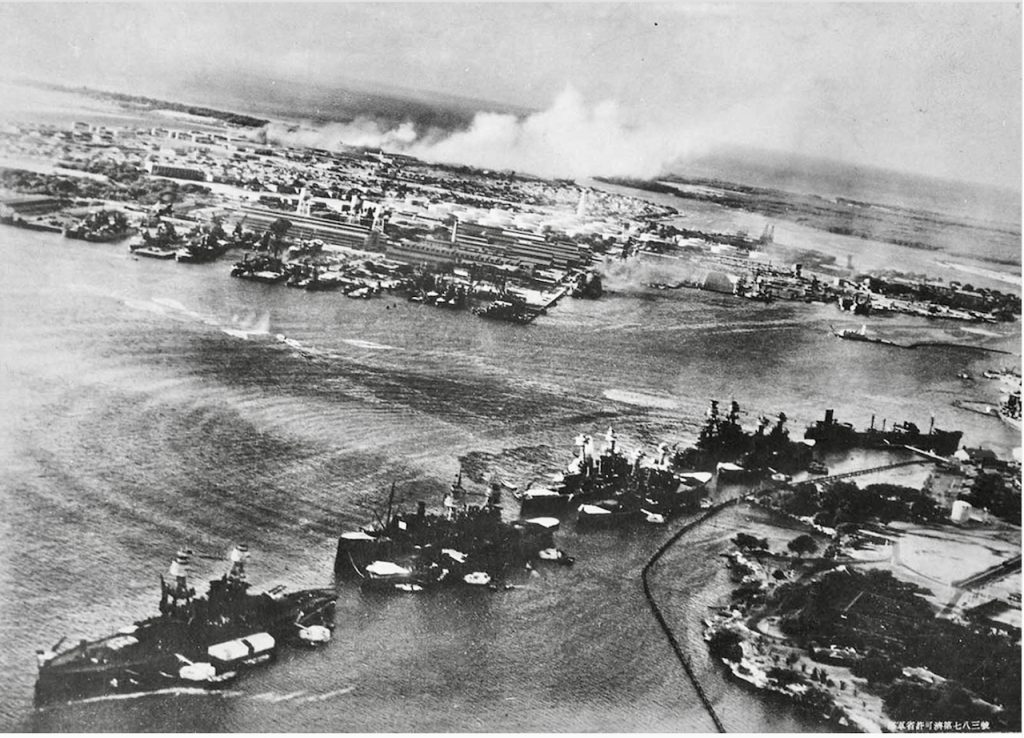
_______________
MANCHURIA, CHINA AND FRENCH INDO-CHINA
Japan invaded Manchuria 1931,China 1937 and later French Indochina 1940.
Japan had joined the Allies to fight Germany and Italy in WW1. Since then Japanese leaders during the interwar period believed that their country deserved a greater share of the international spoils following end of WW1 rather than what a succession of multilateral negotiations had afforded them—Japan wanted more territory, a greater sphere of influence, a larger military and genuine respect on the world stage.
Japan wanted a clause on racial inequality to be included in the charter of the League of Nations. The clause was rejected even though a majority of the delegates voted for it.
After the Japanese moved into Indochina, President Roosevelt ordered a trade embargo on American scrap steel and oil, on which the Japanese military depended.
_____________________
Admiral Yamamoto’s death April 1943
On 13 April 1943 US Navy code breakers discovered Yamamoto planned to tour bases in areas of the Solomon Islands still held by Japanese forces. The admiral’s tour was scheduled for April 18 — just five days away.
18 April 1943 Yamamoto and his Chief of Staff Vice-Admiral Ugaki boarded separate planes at Lakunai airfield, Rabaul to fly to Bougainville, unaware Japan’s codes had been broken and the Allies knew their plans.
Their planes, Mitsubishi G4M1 – known as ‘Betty’ bombers took off at 0600 hours. US Army Air Force Major John Mitchell with his flight of P-38 Lightning Fighters took off from Guadalcanal at 0710 hours – their task to intercept and shoot down Yamamoto’s aircraft.
While some of the P-38s engaged Yamamoto’s fighter escort, other American planes attacked the two bombers. One slammed into the jungle, while the other crashed off shore. Yamamoto aged 59 years was among 11 men who died in the plane that crashed on land, crashing to the jungle ground just south of Aku on Bougainville’s south eastern corner. Ugaki’s plane crashed into the sea at full speed off Moila Point, southern Bougainville. Only Ugaki and two crewmen survived.
Japanese troops recovered Yamamoto’s body, cremated it and sent his ashes back to Japan, where the admiral was given a state funeral.
Yamamoto Isoroku had graduated from the Japanese Naval Academy in 1904 and Japanese Naval Staff College in 1916. He studied English at Harvard University (1919–21). He received flight training in 1924 and was one of the earliest proponents of a carrier-based navy.
Yamamoto had meticulously planned and carried out the Japanese air strike on the US naval base at Pearl Harbour on Oahu Island, Hawaii, 7 December1941.
Yamamoto’s death was yet another blow to the Japanese after the tide of the Pacific war turned with the American victory at Midway,1943 and the taking of Guadalcanal.
Did the US seek revenge for Yamamoto’s attack on Pearl Harbour?
US never forgot the outrage of Pearl Harbour.
Below: Japan’s ‘Betty’s Bombers’
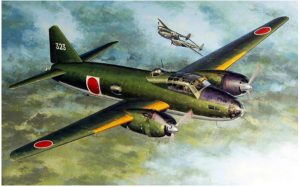
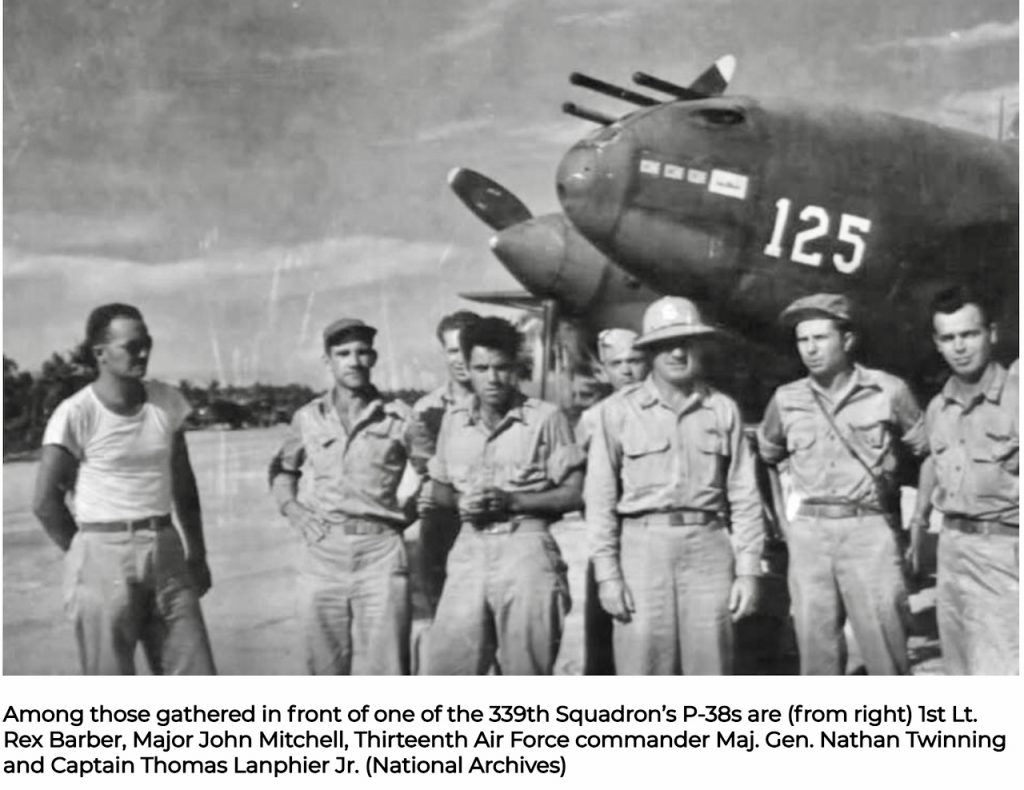
Mitchell was one of the ‘hottest’ pilots from the 339th Fighter Squadron and leader of ‘Operation Vengeance’. He had earned a Silver Star and Distinguished Flying Cross during several victories. 10 of the 18 pilots were drawn from the other two squadrons of the 347th Group.
During November 1942 Mitchell had been promoted to Major and became the Commanding Officer of the 339th Fighter Squadron. As the 339th became equipped with the P-38 Lightnings, it became the first squadron in the South Pacific (SOPA) to operate the twin engine fighter and began flying combat missions.
He survived WW2 and fought in the Korean War. Mitchell died in 1995 aged 81 years.
_______________
You may like to hear Prime Minister of Australia, John Curtin announce “Australia is at war with Japan”

